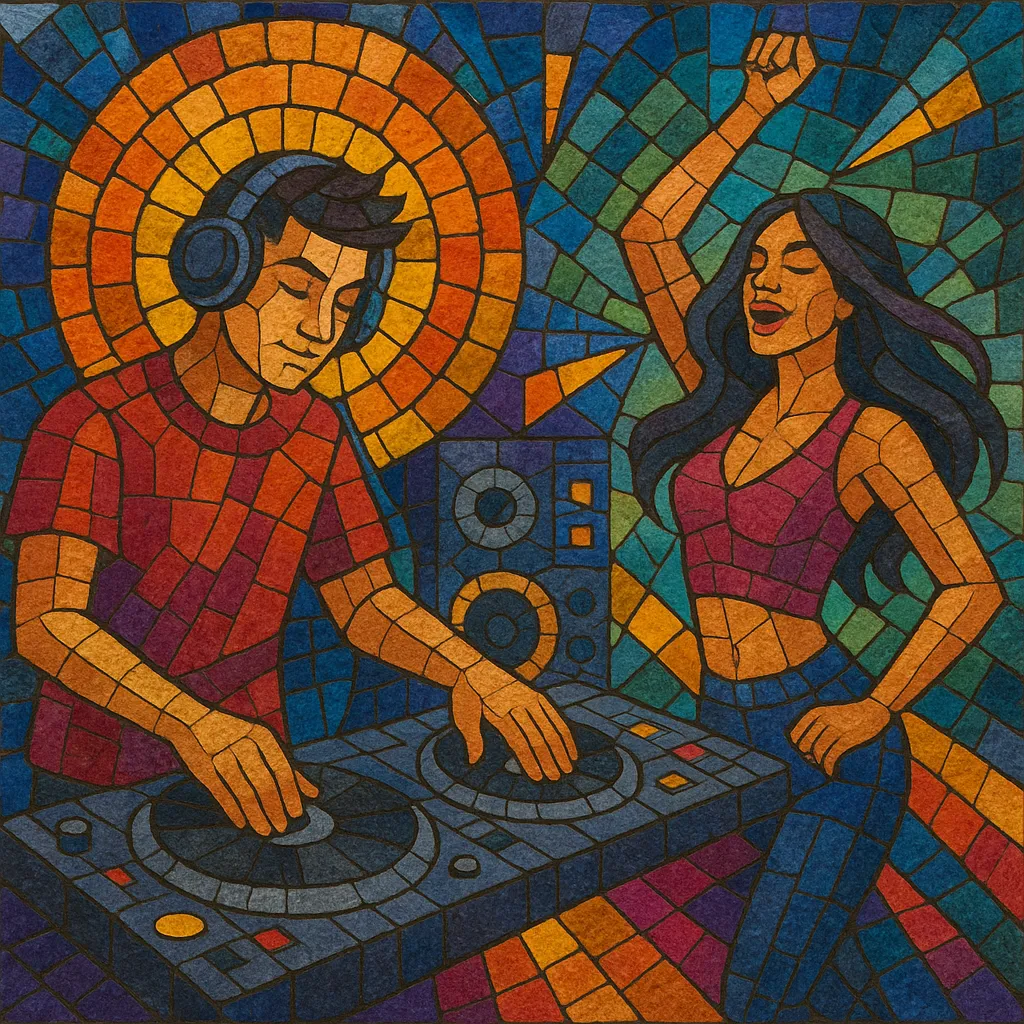Tecnobrega is a high-energy, electronic offshoot of Brazilian brega that emerged in Belém, Pará. It fuses the melodic, romantic songwriting of brega with punchy club beats, bright synths, and crowd‑hype elements drawn from local sound‑system culture.
Built for massive neighborhood parties known as aparelhagens, tecnobrega tracks often feature call‑and‑response vocals, DJ tags, and short jingles that shout out sound systems and events. The music balances sentimental themes—love, longing, and heartbreak—with a relentlessly danceable aesthetic, creating a unique blend of romance and rave.
While fiercely regional in its roots and distribution model, tecnobrega has influenced mainstream Brazilian pop sensibilities and opened pathways for other electronic fusions of brega across Brazil.
Tecnobrega took shape in Belém, Pará, at the turn of the 2000s. Producers adapted the melodic and romantic songwriting of local brega to inexpensive, computer‑based production, layering Eurodance/Eurouse‑style drums, bright synth hooks, and sampled crowd shouts. Its DNA also reflects regional genres like carimbó and guitarrada, plus 1980s–1990s global club forms such as electro and dance‑pop.
A defining feature of the scene is the aparelhagem: enormous mobile sound systems that stage spectacular neighborhood parties. Rather than relying on conventional labels, artists and DJs circulated CDRs and USBs through street vendors, with income centered on bookings and party culture. Tracks commonly include "vinhetas" (jingles) crediting the DJ or sound system, reinforcing a hyper‑local, community‑driven economy.
In the late 2000s and early 2010s, artists associated with tecnobrega gained national visibility. Media attention to Belém’s DIY model and to charismatic performers helped spread the sound beyond Pará. Parallel styles like tecnomelody emphasized even more tuneful choruses, while pop acts from other regions borrowed tecnobrega’s synth palettes and showmanship.
Tecnobrega’s biggest impact lies in its hybrid aesthetics and business model: electronic club sonics paired with romantic brega storytelling, distributed outside traditional industry channels. It helped legitimize electronic brega fusions across Brazil and influenced later scenes—most notably the emergence of brega funk in Pernambuco—while keeping the aparelhagem party as its cultural heart.


